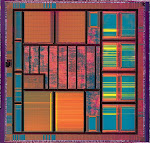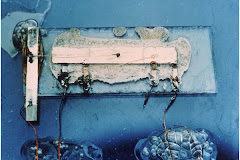VOLUME TEN (2017): ARTEFACTS
-
▼
2015
(24)
-
▼
August
(24)
- VOLUME EIGHT (2015): DIALOGUES & EXCHANGES
- * * * ARTICLES * * *
- Simon Davies: “Headless Bear News”
- Andrea Van Nort: “Shakespeare’s Nature”
- * * * REVIEWS * * *
- Cristelle Baskins: “Galileo’s Idol”
- Gayle K. Brunelle: “Renaissance Utopia”
- Kristin Bundesen: “Deborah's Daughters”
- Timothy Duffy: “Doppelgӓnger Dilemmas”
- Victoria Ehrlich: “Italian Domestic Interiors”
- Jeanette Fregulia: “Reorienting the East”
- Carole Frick: “Mad Tuscans”
- Philip Gavitt: “Rewriting Saints and Ancestors”
- Katherine A. Gillen: “Confessions of Faith”
- Elizabeth Hodgson: “Lady Hester Pulter’s Works”
- Steve Matthews: “Liturgical Subjects”
- Maureen E Mulvihill: “The Emblem in Europe”
- Laura Schechter: “The Queen’s Dumbshows”
- Colleen Seguin: “Beguines of Medieval Paris”
- Lauren Shook: “Literature and Luxury”
- Amy Stackhouse: “Anne Killigrew’s Poems”
- Larry Swain: “European Ethnography”
- Elspeth Whitney: “Making & Unmaking of a Saint”
- VOLUME EIGHT (2015): DIALOGUES & EXCHANGES
-
▼
August
(24)
Sunday, August 16, 2015
Kristin Bundesen: “Deborah's Daughters”
Kristin Bundesen
Book Review
Joy A. Schroeder, Deborah’s Daughters: Gender
Politics and Biblical Interpretation. Oxford University Press (Oxford, 2014),
xiii + 359. ISBN: 978-0-19-999104-4
1>
Deborah’s Daughters is a thoroughly researched survey and analysis of
how the story of Deborah from the book of Judges has been appropriated
throughout history. Her
story has been interpreted and re-visioned as a model of female behavior, both
good and bad. The widely divergent interpretations collected and contextualized
by Schroeder is staggering in breadth and she leads the reader through the morass
of information with rigor and impartiality.
2>
Deborah’s story is limited to Judges 4 and 5, approximately 1550 words in the
King James Version and 1400 in the New Revised Standard Edition of the text,
but the influence of her story is in no way reflective of the brevity of the
source. The scriptural account of Deborah reports that she was a judge, prophet,
a military leader and a songwriter. Yet, throughout Judaic and Christian
history, details have been added, or subtracted and then reimagined to suit the
agendas of spiritual, political and cultural leaders including whether or not
she was a mother – or just a mother of Israel; married to Barak or to Lappidoth
– or that these are two names for one husband; that she was a woman of light
because she made wicks for the lamps in the temple – or that she made wicks for
her husband who made the lamps in the temple; that she was one of many female
prophets – or that she was elevated to prophet solely because there were no
qualified men available; that she was a worthy woman because she encouraged men
from the relative safety of the domestic sphere – or that she was worthy woman
because she held public office, leading by example. There is not even agreement
about the meaning of her name, commonly translated as ‘bee’. Should ‘bee’
be interpreted as publicly industrious, or a woman who stays close to her home,
her hive?
3>
Regardless of the interpretation or the time period, if viewing the entire text
of the source story, two challenges remain regarding Deborah. First, the New
Testament authors, particularly Timothy and Paul, admonish against female
leadership within and without the church – not a problem for Judaic scholars
who do not recognize the New Testament. Second, Deborah praises the female Jael
for driving a tent peg through the head of the enemy leader Sisela, thereby
murdering him. Praising an assassination seems un-womanly, even possibly
un-manly, in most interpretations and consequently this detail is frequently
overlooked or conveniently forgotten by commentators. A political Machiavellian
would have no problem with praising the expediency of assassination regardless
of the assassin’s gender but they would be unlikely to look to the Old
Testament for justification.
4>
Schroeder takes a chronological approach working through broad periods of time
from the early church, to the middle ages, the early-modern period into the
Victorian period with the rise in female evangelical and spiritualist preaching
and ending with the early 21st century.
5>
The first chapter leaps right in comparing two first-century Jewish accounts
and their nearly opposite interpretations of Deborah’s story setting the stage
for the subsequent centuries. Josephus’s Jewish
Antiquities acknowledges Deborah as a prophet but neglects to mention that
she ‘judged’ Israel for forty years, while Pseudo-Philo’s Biblical Antiquities exalts her leadership and likens her to Moses.
6>
With the rise of the Christian church in the fourth and fifth centuries,
Deborah becomes domesticated mirroring the newly-forged emphasis on female
subservience, and instead of her prophetic leadership, her wifely role is
emphasized. Schroeder deftly leads the reader through the taming of disruptive
biblical texts via allegory starting with the epistle of Jerome (c.345-420) and
addressed in each subsequent chapter as appropriate.
7>
By the Middle Ages, biblical commentary had recast Deborah as a co-judge with
her husband further downgrading her independent status only to be offset by
Christine de Pisan’s elevation of Joan of Arc as standing in the mold of
Deborah the prophetess. Students of Aquinas will find Schroeder’s
deconstruction of his position on the difference between ordination, which he
deemed requires male-ness, and prophecy which is not sacramental, fascinating
in teasing out theological stances from straight misogyny.
8>
The gender debates of the early-modern period gained heat as the century of
queens, highlighted by the reign of Elizabeth I of England, required some
explanation for the deviation from what was considered the natural order of a
femme-couvert subject to her father, husband or male relatives. Chapters 3 and
4 are especially informative as Schroeder does an excellent job of opening up
the discussion beyond John Knox’s polemic The
Monstrous Regiment of Women presenting information on multiple
viewpoints through out the Reformation. Oft-overlooked, Argula Von Grumbach and
Marie Dentière, two female Christian reformation activists, are included as
well as the usual suspects of Luther, Calvin and Bucer. The discussion of
literary ladies who invoked Deborah as a role model for publishing their own
works, especially poems and songs in the manner of Amelia Bassano, demonstrates
how desperately female voices have looked for precedence, while at the same
time male theologians emphasized Deborah as an exception, not a role model.
9>
Unsurprisingly, the debate over Deborah shifted from defense against male
attacks on female agency to arguing for political equality entering the
nineteenth century. By transforming the maternal ideal as exemplified, oddly,
by Queen Victoria, into a call for suffrage in preaching as well as political
suffrage, Schroeder’s research highlights the constant malleability of Deborah’s
story.
10>
If the debate over Deborah has been
active from the times of the early church, it should come as no surprise that
the debate continues today. Deborah a as point of reference for the candidacy
of Sarah Palin in 2008 is addressed in the chapter aptly titled “A Fiery Woman”
which also includes feminist debates, both Judaic and Christian, European,
Asian, and North and South American. The increased call for the presence of
women in the military again looked to Deborah as precedent. If Deborah’s Barak
truly would not go to war without her by his side, whether she was on the front
line or commanding from the rear, then why should women not serve fully in the military?
11> The
conclusion pulls together the debates by theme – and there are several. Schroeder
deftly summarizes the historical debates of Deborah as prophet, religious
leader, military combatant, mother, author, and political leader.
12>
This text would be helpful to undergraduate and graduate students working with
history, politics and women’s studies. It would also be invaluable to those
working on theological topics. A fascinating course could be designed using
this book as an example of how very little text, in this case two chapters of
the Old Testament, can be used to enforce and challenge social, political,
cultural, and theological norms across centuries. As a central case study,
students could be challenged to find additional sources that have been widely
manipulated to promote or challenge agendas across time. If nothing else, Deborah’s Daughters is an invaluable reference
for academics who value thoroughness and above all fairness.
_____
Kristin Bundesen is Senior Faculty at Walden
University. Her research includes Elizabethan social and political culture, and
popular culture treatment of the early modern period. She has contributed
articles to the Encyclopedia of Early Modern English Women and
to The Ritual and Rhetoric of Queenship 1250-1650 (2009) and is
serving as scholar for the New Mexico Museum of Art First Folio Exhibition.
_____
APPOSITIONS:
Studies in Renaissance / Early Modern Literature and
Culture,
http://appositions.blogspot.com/,
ISSN: 1946-1992,
Volume Eight (2015): Dialogues & Exchanges
_____
Subscribe to:
Post Comments (Atom)













No comments:
Post a Comment